Photographer / John Nation
Among the memories that came to Cerise White-Snyder after 40-plus years gone from the Floyds Fork bottomlands were walking along the top of the narrow concrete wall around the Seaton-Mills Cemetery, a time-worn, iron-gated enclosure that securely captures local history in time and place.
She was then maybe seven or eight years old. Looking at the worn, pitted, four-foot-wall off Seatonville Road almost a half-century later she wondered how they did it, her brother, Jay, and sister, Amber, along with her, tip-toeing across the top of those narrow walls, arms stretched out for balance, glancing down at hand-carved gravestones with names dating back to 1797.
But it was a game, a silly kids’ game they played without ever telling their mother.
“I guess she would be afraid we’d get hurt,” White-Snyder says. “But we’d climb and play and whoever fell into the cemetery died. It was appropriate, don’t you think?”
Also appropriate is the preservation of that cemetery and that bottomland, once a farm, then a golf course, then a horse farm. It’s now become the entrance to the Turkey Run Park section of The Parklands with its canoe launch, hiking trails, well restored Ben Stout House and Brown-Forman Silo Center.
The fading memories of the former residents such as Cerise White-Snyder will have to preserve the rest. She was then one of seven White children whose lives quite literally stretched along Floyds Fork from Broad Run to Stout Road to Seatonville Road.
Their father, J. B. White, was a perpetual tenant farmer, an old school hard-working man whose day jobs included gas stations, construction sites, warehouses and factories – while milking cows before and after.
His children were his obligatory un-hired hands. The family moved early and often as J. B. White worked different area farms. They lived for a time in a snug old white house on a gravel road off Stout Road that paralleled Floyds Fork – along with 18 of their father’s bird dogs.
On many school mornings, the White children would walk almost two miles up and over a steep hill past what’s now The Parklands Silo Center to catch the school bus at Broad Run Road.
They also lived for a few years in the old Seatonville schoolhouse near Seatonville Road and Echo Trail – a long gone, two-story structure converted from rural school to a satisfactory, if not child-crowded, home.
After walking home from the school bus along Stout Road, the oldest kids would walk a mile near Floyds Fork and through the old Irongate Golf Course to the Seaton-Mills Cemetery where their father would pick them up to help him milk a dairy herd off Old Heady Road.
“We got off the school bus about three o’ clock because I remember I wanted to watch a little glimpse of the Audie Murphy movie on channel three,” Cerise says. “Mom would have beans, potatoes and cornbread ready for us when we got home, and we’d start walking and meet dad over by the cemetery about four o’clock.”
From there they all went to the Jenkins farm on Old Heady Road to milk the cows.
“There were 110 cows and every one of them was named,” White-Snyder says. “There were names like ‘Romanos,’ ‘White Malcolm,’ ‘Black Malcolm,’ ‘Scabby’ and ‘Three Titty.’ “We had to check them off as they’d come in. I was the feeder and took care of the baby calves, and Amber did, too. Then dad would drive us all home and we’d go to sleep and then get up in the morning and go to school.”
So more than 40 years later – seeking to unite history and The Parklands – we were walking up the same gravel road along Floyds Fork she walked as a child. We were looking – as it turned out – for their old house that no longer existed, a fishing pond that has since been filled in and a barn filled with snakes that had been torn down.
But the futile search rekindled memories of them all living there – and the things that kids do when money is no object.
“Right across from the barn my brother put this wire through a can and we could actually hear the vibrations,” White-Snyder says. “We thought he was a genius. We thought he had invented the telephone or something.”
As we pushed further up the hill seeking any remnants of her old house, she remembered an old man who would sit on the front porch of his wooden shack, a man to be avoided: “We always heard he would shoot somebody.”
She remembered the children getting bicycles for Christmas — her father pushing them down the hill to get them started. They would play “Kick the Can” – a game born of The Great Depression that combined playing hide-and-seek, having no money and freely kicking a tin can in any direction.
She remembered a mantle filled with Easter baskets: being a good student despite the fact she could not even read the blackboard until she got glasses in fourth grade, playing golf inside the dairy barn with tobacco sticks, the siblings building play houses of sticks – and throwing sticks at one another to see who could catch them.
“I mean, that doesn’t sound like a game,” she says, but you had to make up games as you went along. We didn’t have very much to work with.”
The farm work was endless, very much part of who and what they were. But they never kept score – or even time.
“We didn’t pay any attention to time,” she says. “Mom and dad always did that for us, time to go to school, time to go milk. Nobody actually ever told us the time and I never looked at a clock.”
She remembered the late 1960s winter so cold their three ponies froze to death – one of them her favorite, a solid white named Sugar. She remembered her father’s rules of parenting, his daughters couldn’t date until 18, his sons at 16, she couldn’t even go to the school prom.
She remembered her father plowing tobacco fields and planting tobacco behind a mule, two older siblings setting the tobacco as she followed behind them to replace any plants they missed.
“I’d be so tired that dad would throw me up on the back of the mule and I’d hang on to the harness horns for dear life,” she says. “He’d hit that mule on the back of the butt and tell it to go home, and it was a long way, too. I’d put my head down and lay on her back. I didn’t even watch. She’d gallop straight back to the barn, ready to eat. He’d just take you back home, and dad and Amber and Jay would take the truck home.”
But what she most remembered was a bunch of them riding an old bathtub down the side of a hill near their house into Floyds Fork. We kept walking up the graveled path seeking any remnants of their old house, the exact hill they slid down.
She found the hill – she thought – up near the new Parklands road that connects the elaborate playground and modern fountains of the nearby Sprayground at the Parklands Creekside Center with her memories of riding in a bathtub down a steep slope.
“We’d take the bathtub, I guess dad would help us pull it all the way up the hill, and we’d all hop in and slide down,” she says. “There were these little flimsy locust trees along the way and we’d all grab hold if we wanted to slow down. We’d slide down here into that river, or what we thought was a river. Even if it was just a creek, parts of that creek was over our heads. Can you imagine us being brave enough to do that?”
Her father, J. B. White, 78, the son and grandson of farmers, grew up in Adair County. He moved to Louisville at age 16 to work at an uncle’s truck stop on Seventh Street Road near the Yellowstone Distillery.
He married his wife, Wanda, 57 years ago. Altogether they had nine children in the almost 20 years between 1957 and 1976 – losing their first child at birth.
Some of their tenant-farm houses had no water or indoor bathroom facilities. Wanda would help her husband with the farming when she could, the old family movies show her helping with the pigs.
“Mom didn’t have it easy,” her daughter says.
J. B. White got into construction, helping build the Ford plant and the Watterson Expressway and then at Midland Warehouse. He then found work and rental homes on dairy farms, milking cows at 3 a.m., going to his day job, coming home and milking the cows into the night.
“I went about four years and never missed a day’s work or milking,” he says.
They lived for about three years in the old Seatonville school house which was perched up on a small rise above Seatonville Road.
“If they hadn’t told you it was a schoolhouse you would never think it was a schoolhouse because they redone it,” he says. “We had a cistern there and they had it fixed up real nice. I slept upstairs, right by a bunch of windows. And I could look out there.”
White has a fine memory for detail, the places they lived and the people they met. In time he also became very familiar with the Floyds Fork bottomland geography, moving his family to several farms, a series of tenant and 50-50 farming deals, always bringing his many bird dogs with him.
One job in particular – the John Jenkins farm – came about due to the sudden death of John Jenkins.
“His tenant shot and killed him, and there wasn’t nobody who knew anything about his cows except me,” White says.
At one point he was also milking his own 10 or 12 cows by hand. He was eventually farming about 800 rented and leased acres – corn, hay, alfalfa and tobacco – and still working his day jobs.
“I’d work three or four days and never laid my head down,” he says. “I stayed busy. I raised us a garden, six acres of tobacco and about 30 acres of alfalfa.
“I’d cut it until about 2:30 in the morning, stop and go get our border collie called ‘Scotty,’” he says. “All you had to do was go to the dairy barn and say, ‘Scotty, it’s milk time, and he’d get those 110 cows in. If one cow had a calf over in the field he’d bark three times and you’d know right where she was at. That was the smartest dog I ever saw in my life.”
The recent rains that buried the Floyds Fork bottomland came as no surprise. He remembered a time 40 years ago when the old golf course and two bridges across Seatonville Road were all well under water.
“The flood would swim a horse right across Seatonville Road,” he says.
J. B. White later moved back to Adair County. Not surprisingly his daughter, Cerise, got into training horses and now owns White Spirit Farm near Waddy, KY., where she trains and breeds horses – and recently began hosting weddings.
Our walk up her old gravel road – the land where she played as a child now preserved in a totally different fashion for other children – we eventually made our way back to the Stout Road home of Virgil Hawthorne, 63, who grew up just below the White’s old house.
“That house has been gone a long time,” he told her. “It burned down.”
Hawthorne also remembered Cerise’s father: “He had a lot of bird dogs.”
And he knew of their old gravel road that once forded Floyds Fork.
“That’s the original horse-and-buggy road my mom rode when she was a kid, back in the 1920s. It would come out on Seatonville Road,” he says.
The two of them talked for almost as hour – catching up on old names and places. Cerise White-Snyder says all in all she thought she had a pretty good childhood. Virgil Hawthorne nodded in agreement.


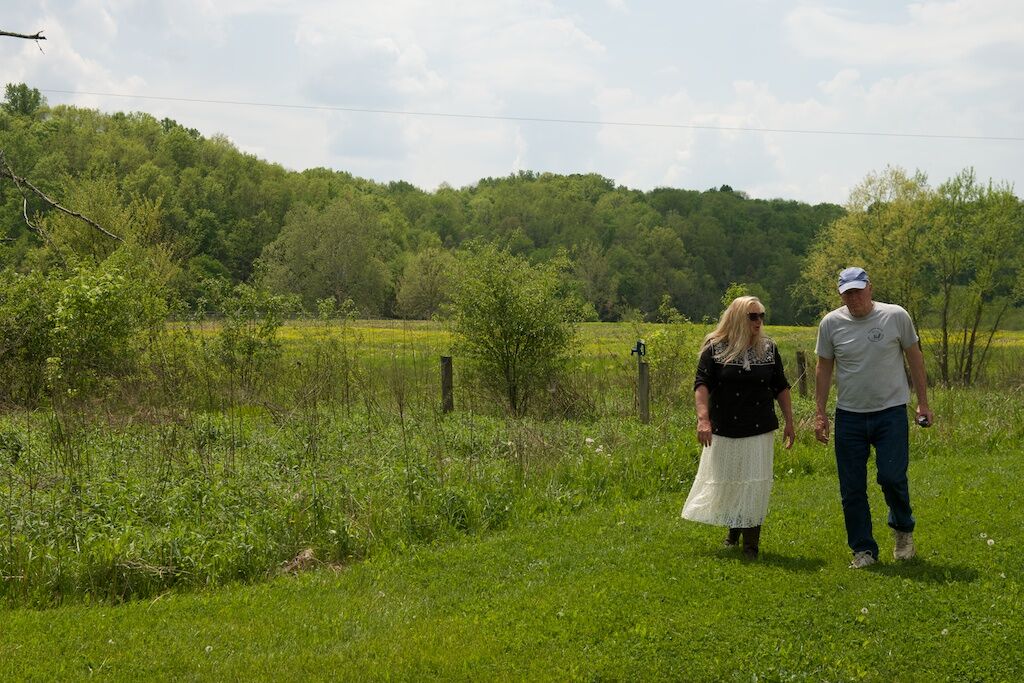

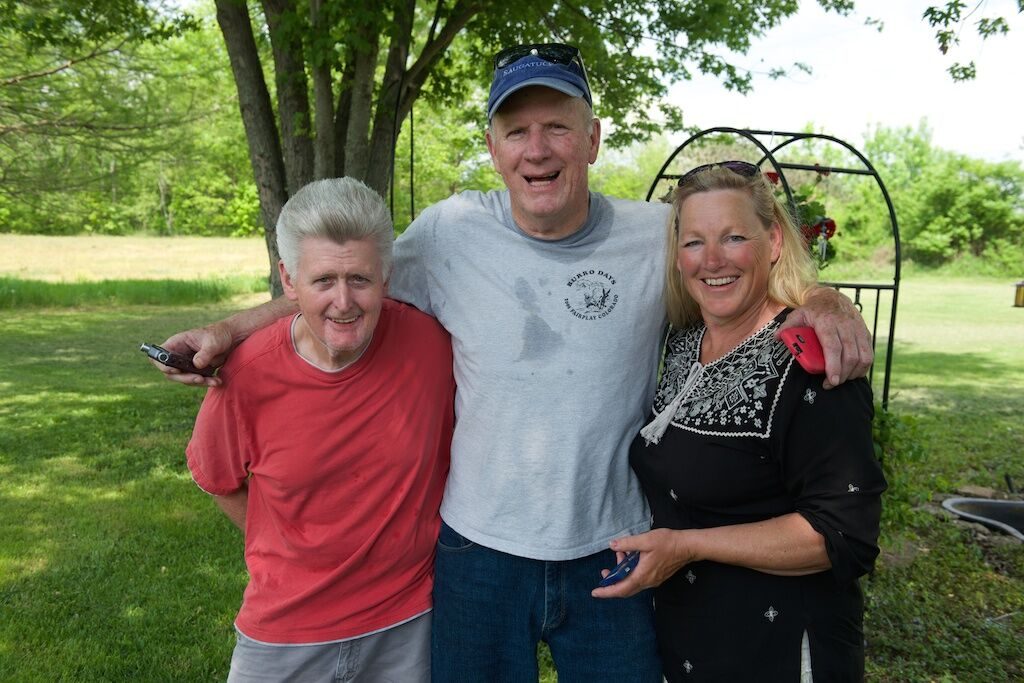
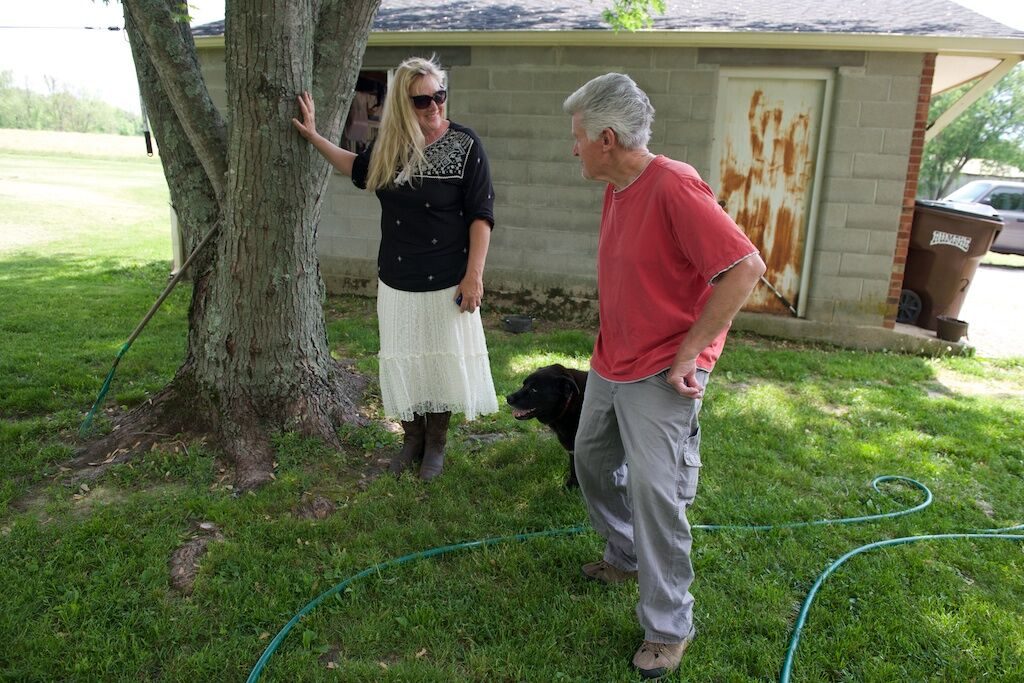
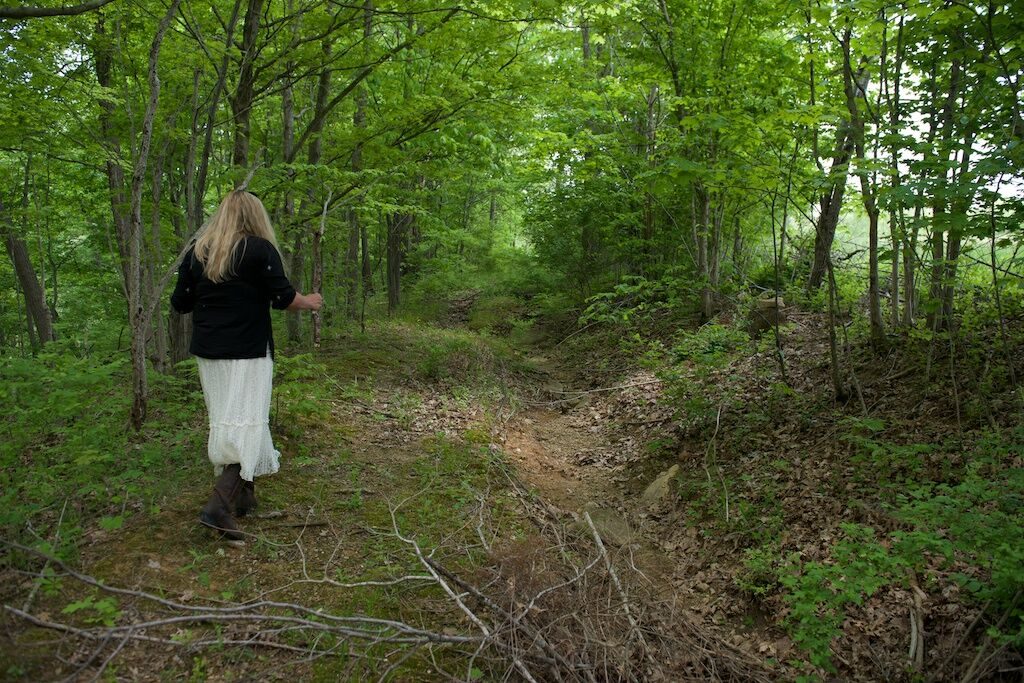
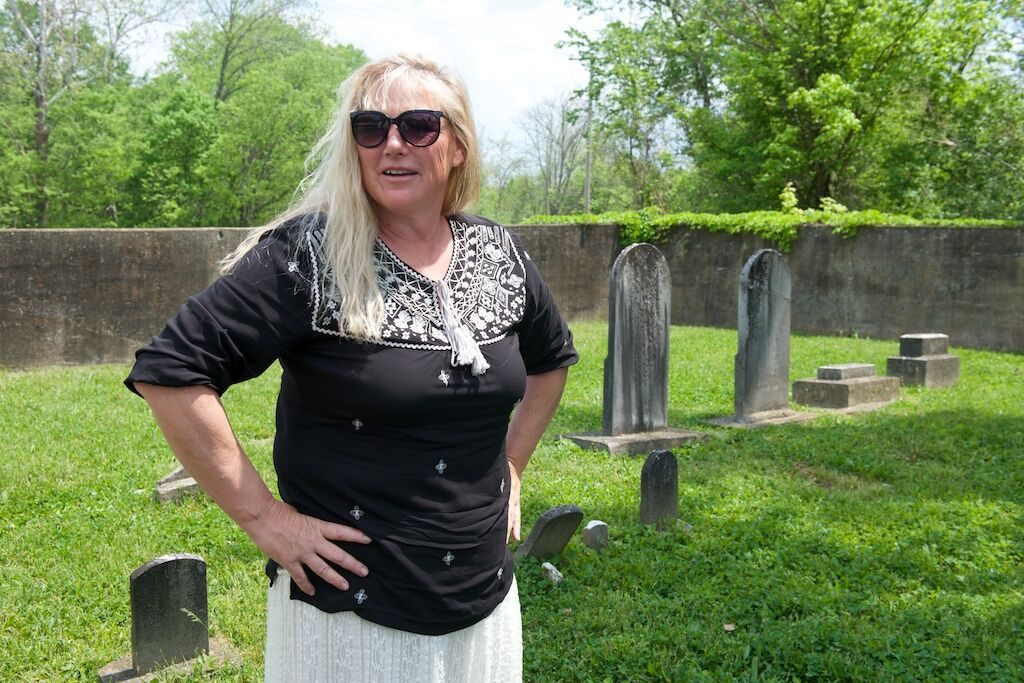
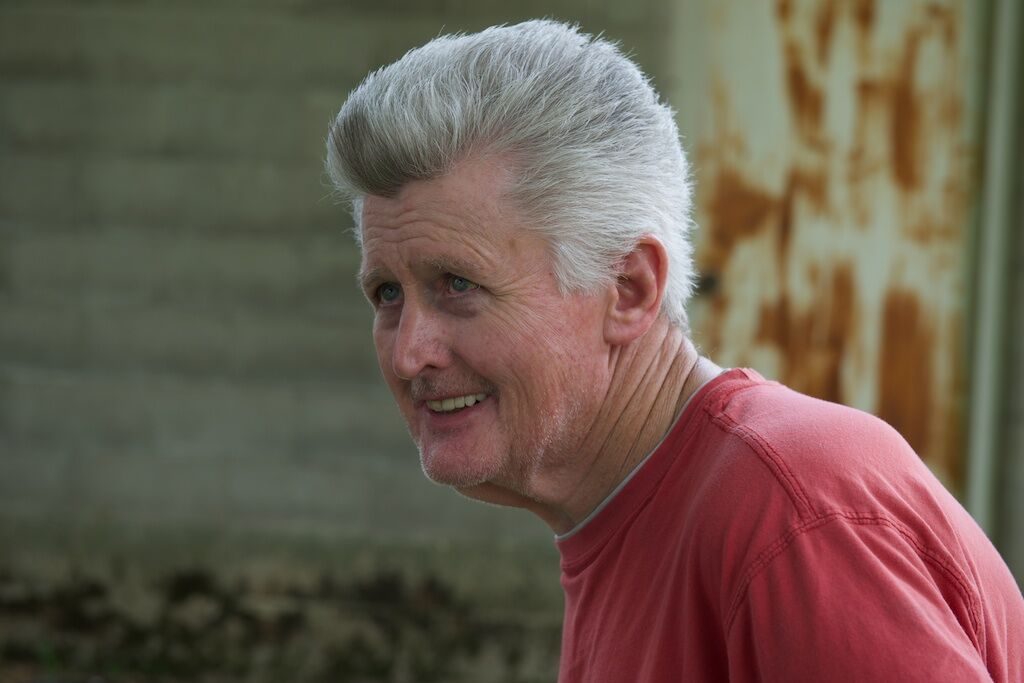



Comments 1
Bob Hill is an amazing writer, he really gets to the heart of the person he is interviewing.